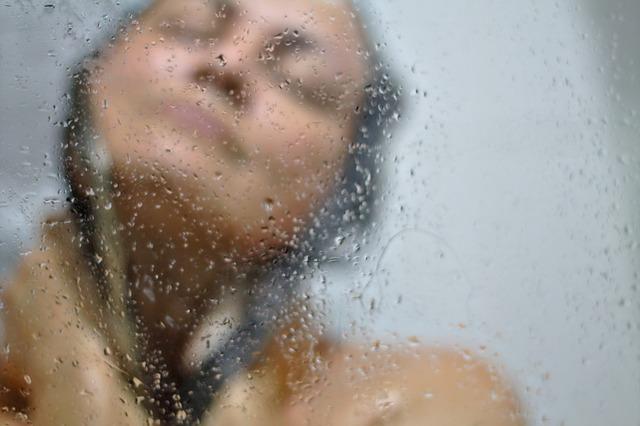How to Make Your Own Ice Bath: DIY Cold Therapy Adventure

Are you ready to dive into the invigorating world of cold therapy? If you’ve ever marveled at the countless benefits of ice baths but found yourself hesitant to embrace this chilly endeavor, we’re here to guide you through the process. In this article, we’ll share step-by-step instructions on how to create your own ice bath right at home using simple household items. Join us on this DIY cold therapy adventure and unravel the secrets to enhancing your recovery, boosting your mood, and supercharging your overall well-being. Get ready to take the plunge into a world of icy exhilaration!
Contents
- 1. Preparing the Perfect Environment: Creating a Chilled Oasis for Cold Therapy
- 2. Essential Equipment: Gathering the Necessary Tools for Your Ice Bath
- 3. DIY Ice Bath Hacks: Maximizing Comfort and Efficiency
- 4. Mastering the Art of Temperature Regulation in Your Ice Bath
- 5. Safety First: Tips for a Secure and Stress-Free Cold Therapy Experience
- 6. Techniques for Optimizing Your Ice Bath Session
- 7. Beyond the Ice Bath: Complementary Cold Therapy Methods to Enhance Recovery
- 8. Understanding the Science Behind Cold Therapy and Its Benefits
- 9. Customizing Your Ice Bath: Adding Ingredients for Enhanced Results
- 10. Maintaining Your Ice Bath: Proper Cleaning and Storage Practices for Longevity
1. Preparing the Perfect Environment: Creating a Chilled Oasis for Cold Therapy
Creating the perfect environment for cold therapy can enhance your ice bath experience and maximize its benefits. Here are some tips to help you create a chilled oasis for your DIY cold therapy adventure:
-
Find the perfect location: Choose a spot in your home or garden that is quiet, serene, and private. You want to be able to relax and enjoy the therapeutic effects of the ice bath without any distractions.
-
Gather the right accessories: To make your ice bath experience comfortable and efficient, you’ll need a few essential accessories. These include a sturdy tub or container large enough to fit your body, a waterproof thermometer to monitor the water temperature, and a timer to track your session.
-
Create an ambiance: Set the mood for relaxation by dimming the lights or using candles to create a calming atmosphere. Consider playing soothing music or nature sounds to further enhance the tranquility of your ice bath oasis.
-
Temperature control: Fill your tub with cold water and add ice to reach your desired temperature. Using a waterproof thermometer, aim for a temperature between 50-60 degrees Fahrenheit (10-15 degrees Celsius) for optimal cold therapy. Maintain the temperature by adding more ice as needed throughout your session.
- Enhance the experience: Add essential oils or Epsom salts to the water for additional relaxation and muscle soothing benefits. Consider using a foam roller to target specific muscle groups before or after your ice bath. And don’t forget to hydrate yourself before and after your cold therapy session to stay properly nourished.
Creating a chilled oasis for cold therapy will not only make your DIY ice bath more enjoyable, but it will also help you reap the maximum benefits for your mind and body. So, get ready to dive into the world of cold therapy and experience the rejuvenating power it has to offer!
| # | Accessories |
|---|---|
| 1 | Sturdy tub or container |
| 2 | Waterproof thermometer |
| 3 | Timer |
| 4 | Essential oils or Epsom salts |
| 5 | Foam roller |
2. Essential Equipment: Gathering the Necessary Tools for Your Ice Bath
When it comes to creating your own ice bath, having the right equipment is crucial to ensure a safe and effective cold therapy adventure. Here are some essential tools you’ll need to gather before diving into the icy depths:
- Ice: The cornerstone of any successful ice bath is, of course, the ice itself. Stock up on enough ice to fill your chosen container. Whether you prefer large bags of ice from the store or DIY ice cubes made in advance, make sure you have enough to cover your body up to the chest level.
- Container: Finding the perfect vessel for your ice bath is essential. Look for a durable and deep container that can comfortably accommodate your body while leaving enough room for the ice to circulate around you. A large plastic storage bin or a sturdy bathtub can work well for this purpose.
- Thermometer: Monitoring the temperature of your ice bath is crucial for safety and ideal therapeutic benefits. Invest in a reliable thermometer that can accurately measure and display water temperature. Aim for a temperature range of 50 to 59 degrees Fahrenheit (10 to 15 degrees Celsius) for optimal results.
- Timers: Keep track of your time in the icy waters with the help of timers. You can use a kitchen timer, a smartphone app, or even your smartwatch. Set a timer for your desired duration, starting with just a few minutes and gradually increasing it as your tolerance improves.
- Towel: After your invigorating ice bath, you’ll need a soft and absorbent towel to dry yourself off. Opt for a large, plush towel to help keep you warm and cozy after braving the cold temperatures.
Remember, the right equipment sets the stage for a successful ice bath experience. By ensuring you have ice, a suitable container, a thermometer, timers, and a comfortable towel, you’ll be well on your way to creating your own DIY cold therapy adventure.
3. DIY Ice Bath Hacks: Maximizing Comfort and Efficiency
Ice baths have become increasingly popular in recent years for their numerous health benefits, including reducing inflammation, speeding up recovery, and improving overall well-being. While taking an ice bath may seem like a daunting task, there are several DIY hacks that can maximize your comfort and efficiency during this cold therapy adventure.
1. Preparing the Ice Bath:
– Start by filling your bathtub or a large container with cold water. Make sure there’s enough water to fully immerse your body.
– Add ice cubes or crushed ice to the water. Aim for a water temperature between 50 to 60 degrees Fahrenheit (10 to 15 degrees Celsius).
– For added benefits, consider adding Epsom salt or essential oils to the water. Epsom salt can help relax muscles, while essential oils can provide a soothing aroma and enhance relaxation.
2. Maximizing Comfort:
– Before getting into the ice bath, gradually lower the temperature of your body by taking a cold shower or using cold compresses on your limbs. This will help your body adapt to the cold temperature more comfortably.
– Wear a swim cap or wrap a towel around your head to prevent heat loss from your scalp.
- Use a waterproof pillow or pool noodle to support your head and neck while in the ice bath. This will help alleviate any discomfort and reduce strain on your muscles.
3. Enhancing Efficiency:
- To maximize the therapeutic benefits of an ice bath, it’s recommended to stay in the water for 10-15 minutes. Use a timer or set a smartphone alarm to ensure you stay in for the desired duration.
– While in the ice bath, practice deep breathing exercises to help relax your mind and body. Take slow, deep breaths in through your nose and exhale through your mouth.
– After the ice bath, it’s important to warm up gradually. Start by drying off and wrapping yourself in a warm towel or blanket. Slowly increase your body temperature by sipping on a warm beverage or taking a warm shower.
By following these DIY ice bath hacks, you can create a more comfortable and efficient cold therapy experience. Remember to listen to your body and adjust the water temperature or duration of the ice bath as needed. Stay consistent with your ice bath routine and reap the benefits it has to offer for your overall health and well-being.
4. Mastering the Art of Temperature Regulation in Your Ice Bath
When it comes to experiencing the full benefits of cold therapy, is crucial. By understanding how to control the temperature just right, you can maximize the therapeutic effects and avoid any discomfort or potential injuries. Here are a few valuable tips to help you become a pro at temperature regulation in your very own DIY ice bath.
1. Start with the Right Temperature
As a general guideline, it’s recommended to begin your ice bath with a temperature around 50-60°F (10-15°C). This starting point allows your body to gradually acclimate to the cold, preventing any sudden shocks to your system. Over time, you can gradually lower the temperature to enhance the benefits, but always listen to your body and go at your own pace.
2. Monitor and Adjust
During your ice bath session, it’s essential to monitor the water temperature regularly. You can use a reliable thermometer to ensure accuracy. If the temperature drops too low, add some more ice to maintain your desired level. On the other hand, if it gets too cold for comfort, adding warm water can bring it back just right. Remember, the key is to find the sweet spot that challenges you but remains manageable.
3. Use the Power of Breathing
One technique that can greatly enhance your ice bath experience is conscious breathing. Deep, slow breaths help you relax and manage the discomfort caused by the cold. Breathing exercises, such as inhaling deeply through your nose for a count of four, holding your breath for a count of four, and exhaling through your mouth for a count of eight, can help regulate your body’s response to the cold and increase your tolerance.
| Temperature | Recommended Session Length |
|---|---|
| 50-55°F (10-13°C) | 5-8 minutes |
| 45-50°F (7-10°C) | 3-5 minutes |
| 40-45°F (4-7°C) | 2-3 minutes |
Remember, everyone’s tolerance to cold is different, so adjust these recommendations based on your comfort level. With time and practice, you’ll become more attuned to your body’s signals and achieve the perfect balance between discomfort and optimal benefits from your ice bath sessions.
5. Safety First: Tips for a Secure and Stress-Free Cold Therapy Experience
If you’re ready to embark on a DIY cold therapy adventure by creating your own ice bath, it’s crucial to prioritize safety to ensure a secure and stress-free experience. Whether you’re a seasoned athlete or looking to explore the benefits of cold therapy for the first time, these tips will help you make the most of your ice bath session:
1. Proper Preparation:
- Choose a well-ventilated area where spillage can easily be cleaned up.
- Have a towel nearby to dry off after the ice bath.
- Keep a timer or clock within sight to accurately track your immersion time.
2. Gradual Temperature Adjustment:
- Start with lukewarm water and gradually add ice to reach your desired temperature.
- Never submerge yourself in water that is too cold, as it can result in hypothermia.
- Monitor your body’s response and adjust the temperature accordingly.
3. Monitoring Duration:
It’s essential to keep track of your ice bath immersion time to optimize the benefits while ensuring your safety. Here are some guidelines to consider:
| Goal | Duration |
|---|---|
| Recovery | 10-15 minutes |
| Performance Enhancement | 5-10 minutes |
| Stress Relief | 2-5 minutes |
4. Listen to Your Body:
Pay attention to any discomfort or unusual sensations during your ice bath. If you experience extreme cold intolerance, lightheadedness, numbness, or tingling, it’s crucial to exit the ice bath immediately. Remember, your safety and well-being always come first.
6. Techniques for Optimizing Your Ice Bath Session
When it comes to taking an ice bath, there are a few techniques that can help enhance your experience and make it even more rewarding. By following these tips, you can optimize your ice bath session and reap the full benefits of this powerful cold therapy:
- Preparation: Before jumping into the ice bath, it’s essential to properly prepare your body. Start by taking a warm shower to increase blood flow and help your muscles relax. Additionally, wearing a bathing suit or compression shorts can provide added insulation and protect sensitive areas.
- Breathing exercises: While in the ice bath, deep breathing can help you manage the cold and stay relaxed. Focus on slow, controlled breaths in through your nose and out through your mouth. This technique helps regulate your heart rate and oxygen flow, minimizing the shock of the icy water.
- Gradual progression: If you’re new to ice baths, it’s important to start slowly and gradually increase your exposure time. Begin with shorter durations, such as 1-2 minutes, and gradually build up to longer sessions as your body acclimates to the cold. This approach minimizes the risk of overexposure and allows your body to adapt to the extreme temperatures more effectively.
Remember, an ice bath can be an intense experience, but with the right techniques, it can also be highly beneficial for your body and overall well-being. Experiment with different strategies and find what works best for you. Stay consistent, and you’ll soon enjoy the full potential of this DIY cold therapy adventure!
7. Beyond the Ice Bath: Complementary Cold Therapy Methods to Enhance Recovery
Cryotherapy
While ice baths are a popular form of cold therapy, there are other methods that can be used to enhance recovery. One such method is cryotherapy. Cryotherapy involves exposing the body to extremely cold temperatures for a short period of time. This can be done through whole-body cryotherapy chambers or localized treatments like cryo-spots.
During cryotherapy, the cold temperatures cause blood vessels to constrict, reducing inflammation and swelling. This can help to speed up the recovery process and alleviate muscle soreness. Cryotherapy has also been shown to release endorphins, providing a natural pain relief and mood boost.
Compression Therapy
Another complementary cold therapy method is compression therapy. This technique involves using specialized garments or devices to apply pressure to the muscles, promoting circulation and reducing inflammation. Compression therapy can be used alongside ice baths to enhance their benefits.
Compression therapy is especially useful for post-workout recovery as it helps to flush out metabolic waste products and deliver oxygen and nutrients to the muscles. It can also help prevent muscle damage and soreness by reducing muscle vibration during exercise. Consider incorporating compression sleeves or garments into your recovery routine.
Contrast Therapy
Contrast therapy involves alternating between hot and cold treatments to enhance recovery. By exposing the body to both hot and cold temperatures, blood vessels dilate and constrict, which enhances circulation and reduces inflammation.
One simple way to incorporate contrast therapy into your routine is by taking a hot shower followed by a cold shower. Alternatively, you can use heated towels or heat packs followed by ice packs on targeted areas. This alternating temperature therapy can help decrease muscle soreness, improve flexibility, and promote overall recovery.
| Method | Description |
|---|---|
| Whole-body cryotherapy | Exposing the entire body to extremely cold temperatures in a cryotherapy chamber. |
| Cryo-spots | Localized treatments that target specific muscles or areas with extreme cold. |
| Compression therapy | Using specialized garments or devices to apply pressure to the muscles and improve circulation. |
| Contrast therapy | Alternating between hot and cold treatments to enhance blood flow and reduce inflammation. |
8. Understanding the Science Behind Cold Therapy and Its Benefits
In order to fully appreciate the benefits of cold therapy, it is essential to understand the science behind it. Cold therapy, also known as cryotherapy, involves exposing the body to extremely cold temperatures for a short period of time. This exposure triggers a range of physiological responses that can have numerous positive effects on our health and well-being.
One of the main benefits of cold therapy is its ability to reduce inflammation. When the body is exposed to cold temperatures, the blood vessels constrict and the flow of blood slows down. This decrease in blood flow helps to minimize swelling and inflammation in the body. Moreover, cold therapy can also help to alleviate pain by numbing the area and reducing nerve activity.
Cold therapy has also been shown to improve athletic performance and aid in recovery. Many athletes use ice baths as part of their training regimen, as the cold temperatures help to reduce tissue damage and muscle soreness. By decreasing inflammation and promoting faster tissue repair, cold therapy can help athletes bounce back quicker from intense workouts or injuries.
If you’re interested in experiencing the benefits of cold therapy, you can easily create your own ice bath at home. Simply fill up a large tub with water and add bags of ice until you reach your desired temperature. It’s important to start with shorter durations and gradually increase your exposure time as your body adapts to the cold. Remember to always listen to your body and discontinue if you experience any discomfort or adverse reactions.
Incorporating cold therapy into your routine can have numerous health benefits, from reducing inflammation and pain to improving athletic performance. So why not embark on your own DIY cold therapy adventure and reap the rewards of this natural and effective treatment?
9. Customizing Your Ice Bath: Adding Ingredients for Enhanced Results
Adding ingredients to your ice bath can help enhance the results of your cold therapy adventure. By customizing your ice bath, you can target specific benefits and make the experience more enjoyable. Here are some ingredients you can consider adding to your ice bath:
1. Epsom Salt: Adding Epsom salt to your ice bath can help relax your muscles and reduce inflammation. It contains magnesium, which is known to promote muscle recovery and relieve soreness. Simply dissolve a cup of Epsom salt in warm water before adding it to your ice bath.
2. Essential Oils: A few drops of essential oils can add a refreshing aroma to your ice bath and provide additional therapeutic benefits. Peppermint oil can invigorate your senses and soothe muscle pain, while lavender oil can promote relaxation and improve sleep quality.
3. Herbs and Tea Bags: Infusing your ice bath with herbs or tea bags can offer a spa-like experience. Chamomile tea bags can help calm your mind and relieve stress, while green tea can provide antioxidant benefits and support detoxification. You can also try adding fresh herbs like mint or rosemary for a rejuvenating effect.
4. Baking Soda: Adding a bit of baking soda to your ice bath can help soften your skin and balance its pH levels. It can also provide a slight exfoliating effect, leaving your skin feeling smooth and refreshed.
Remember to test the temperature and avoid adding ingredients that may cause skin irritation or allergies. Experiment with different combinations to find what works best for you. So go ahead, get creative, and customize your ice bath for enhanced results in your DIY cold therapy adventure!
10. Maintaining Your Ice Bath: Proper Cleaning and Storage Practices for Longevity
Maintaining your ice bath is crucial for ensuring its longevity and preserving its effectiveness as a cold therapy method. Proper cleaning and storage practices will help keep your ice bath in optimal condition, allowing you to continue enjoying its benefits for years to come.
To clean your ice bath, start by emptying all the ice and water from the tub. Use a mild soap or detergent and a soft cloth or sponge to gently scrub the interior and exterior surfaces. Pay close attention to any built-up residue or stains, making sure to remove them thoroughly. Rinse the tub with clean water to remove any soap residue, and dry it completely before storing.
When it comes to storage, finding a suitable location is key. Choose a cool and dry area away from direct sunlight and heat sources. Consider placing your ice bath on a sturdy, level surface to prevent any damage. Covering it with a breathable fabric or tarp can provide added protection from dust and debris.
Additionally, consider implementing these best practices to further prolong the life of your ice bath:
1. Use a drain plug or plug kit to prevent any leaks or water damage.
2. Regularly inspect and tighten any loose fittings or connections.
3. Avoid using abrasive cleaners or brushes that can scratch the surface of the tub.
4. If your ice bath has a filtration system, follow the manufacturer’s instructions for maintenance and cleaning.
Remember, proper cleaning and storage practices will not only keep your ice bath in great condition but also ensure a safe and hygienic cold therapy experience every time. So, invest some time in maintaining your ice bath, and reap the benefits of this DIY cold therapy adventure for years to come. In conclusion, diving into the world of cold therapy through your very own ice bath can be an exhilarating and invigorating adventure. By following the simple steps outlined in this article, you now know how to create your own ice bath right in the comfort of your own home. So why wait? Embrace the wonders of cold therapy and reap the numerous benefits it offers for your mind and body. Whether you’re looking to speed up muscle recovery, boost your immune system, or simply enhance your well-being, an ice bath could be the game-changer you’ve been searching for. Remember, start slowly, stay safe, and embrace the chill to embark on this incredible DIY journey towards optimal health and vitality.
















